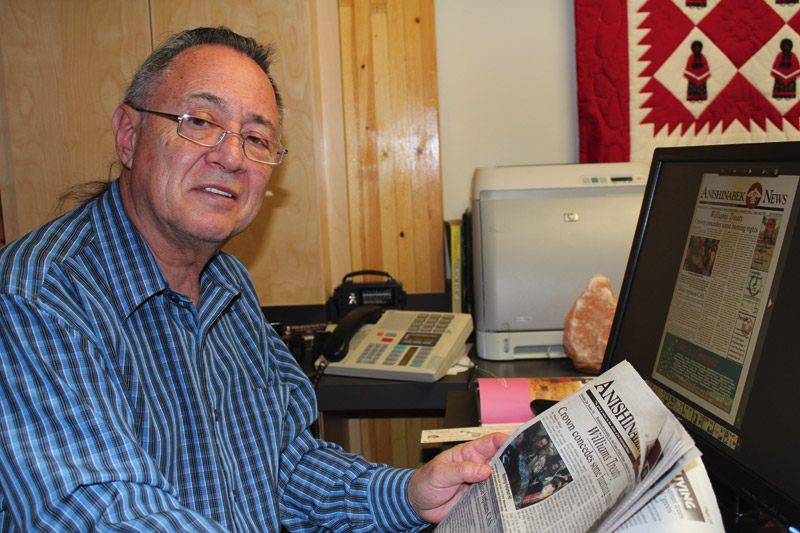Putting national heroes on two-dollar bills
 Contrary to what some would have you believe, there have always been good people in the world.
Contrary to what some would have you believe, there have always been good people in the world.
Humans have a strange tendency to excuse sins of the past by trying to minimize or, worse yet, normalize aberrant behaviour.
So you might hear someone say “Today, of course, we recognize that slavery is not an acceptable practice, but that wasn’t always the case. You have to look at these things in historical context.”
Well, if slavery was universally considered so fashionable, it’s highly unlikely that 750,000 young Americans would have died on domestic battlefields between 1861 and 1865. The threat of losing slave labour to harvest cotton and other crops was the principle reason for Southern U.S. states to secede and plunge their country into a bloody Civil War.
Thomas Jefferson, third president of the United States, was known around the world as a champion of democracy and principal author of the Declaration of Independence, which begins: “We hold these truths to be self-evident, that all men are created equal ….” Jefferson owned hundreds of slaves, and is believed to have fathered children with at least one of them.
It wasn’t too long before the barbaric practice was abolished by the British, among others, so it’s not as if Dixieland plantation owners had no models for more civilized business practices.
Maybe that’s why Jefferson’s likeness was relegated to the U.S. two-dollar bill, while Abraham Lincoln – the great emancipator of slaves – glowers at us from the front of American five-spots.
Similarly, I’ve heard many Canadians imply that Indian Residential Schools really weren’t such terrible places, when one thinks about them in historic perspective. After all, they ask, didn’t other Canadian schoolkids get the strap?
Few of them have bothered to listen to testimony given by survivors – first to the Royal Commission on Aboriginal Peoples 20 years ago, and more recently to the Truth and Reconciliation Commission—that documents some of the horrors inflicted on thousands of innocent children forcibly removed from their parents’ care and shipped off to one of 100 boarding schools established by the government of Canada and operated by various church denominations.
Physical, sexual and emotional abuse permanently scarred most of the survivors – nobody ever refers to residential school “graduates” – and contributed to socio-economic dysfunction that has plagued most First Nations communities across Canada. As expressed by bureaucrat Duncan Campbell Scott, the principal objective of creating the network of schools was to “kill the Indian in the child”, to eradicate First Nations language, culture and belief systems.
While teachers were literally trying to beat the culture out of their Indian pupils, federal laws were forbidding their parents from practising such traditional customs like dancing. Sacred items like masks and pipes were confiscated and put on display in museums, or disappeared into private collections.
But not everyone bought into the official government line that these schools would help “civilize” Native children and mould them into the kind of Canadian citizens envisaged by the department of Indian Affairs.
In fact one of the department’s own employees – Peter Henderson Bryce – quickly recognized that Residential Schools were causing far more damage than the good they were supposed to create. In 1904 the physician was hired by the federal government to manage public health issues for Indian Affairs. Three years later Dr. Bryce released a report critical of public health standards in residential schools in western Canada, where the average death toll of students due to communicable disease was an astonishing 24%.
Successive Liberal, Conservative and Unionist governments buried his report, and the man who founded the Canadian Public Health Association in 1910 was hounded out of his civil service job in 1921. The following year he published his findings in a book titled “The Story of a National Crime: Being a Record of the Health Conditions of the Indians of Canada”. Dr. Bryce died in 1932.
In 1998 the Chretien Liberal government finally offered a Statement of Reconciliation which said Canada was sorry for the country’s official policy of assimilation.
Again on June 11, 2008, Prime Minister Stephen Harper rose in the House of Commons and offered a similar apology, in which he said his Conservative government looked forward to “… forging a new relationship between aboriginal peoples and other Canadians, a relationship based on the knowledge of our shared history, a respect for each other and a desire to move forward together…”
Prime Minister Harper has demonstrated this desire in a strange manner. His government has rammed through legislation that reeks of the assimilationist, “we-know-what’s-best-for-Indians approach”, including a plan to impose a First Nations education system without the meaningful involvement of First Nations citizens, leaders and educators.
The First Nations Child and Family Caring Society – which has managed to haul Canada before a Canadian Human Rights Tribunal to explain why it funds Native child-care agencies 22% less than provincial support for children’s aid societies – has created an award in honour of Dr. Peter Henderson Bryce. It will be given every two years to recognize children and youth who individually or in groups advocate for the safety, health, or well-being of First Nations, Métis and Inuit children and youth.
It’s people like Dr. Bryce who deserve to have their photos on Canadian currency to serve as a constant reminder of the humanitarian contributions they have made to make their country a better place.
Let’s reserve a future place for Stephen Harper on Canada’s two-dollar bill.
Oh, that’s right – we don’t have those any more.
Maurice Switzer is a citizen of the Mississaugas of Alderville First Nation. He serves as director of communications for the Union of Ontario Indians and editor of the Anishinabek News.


